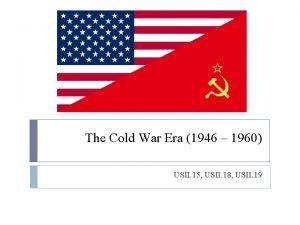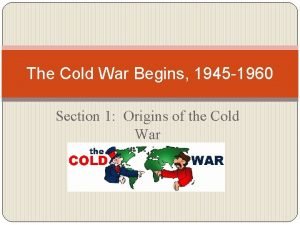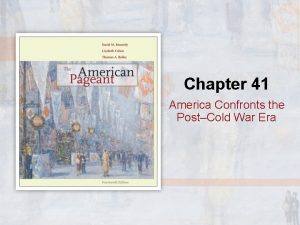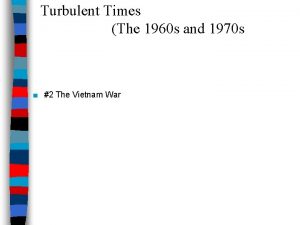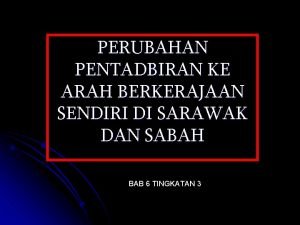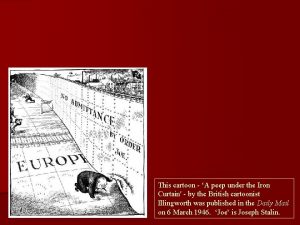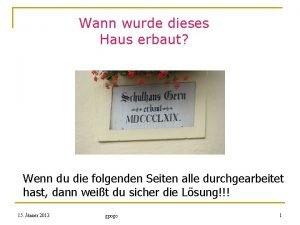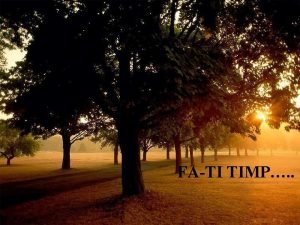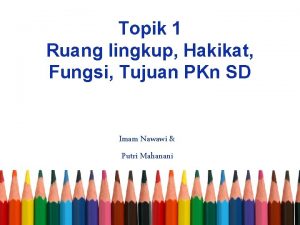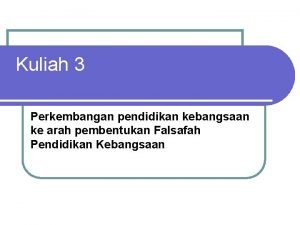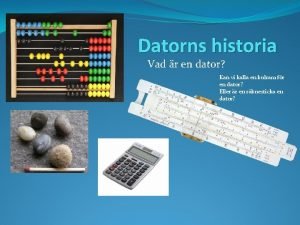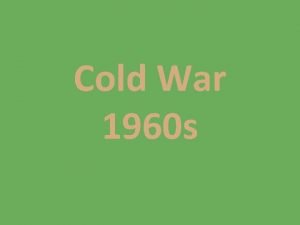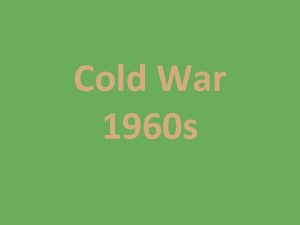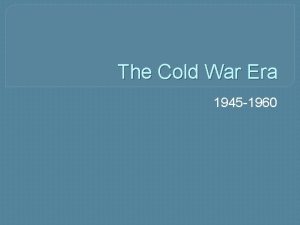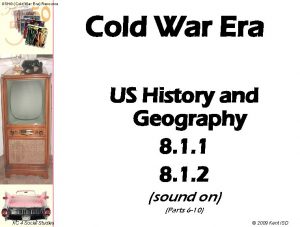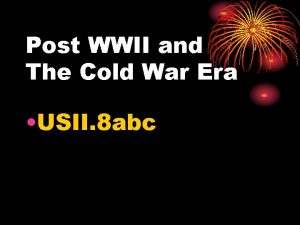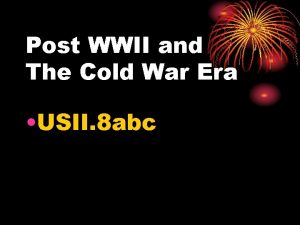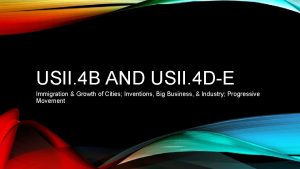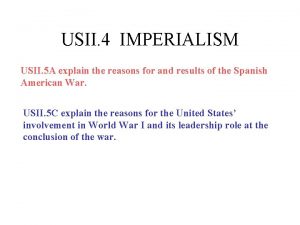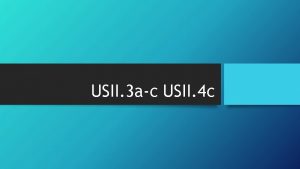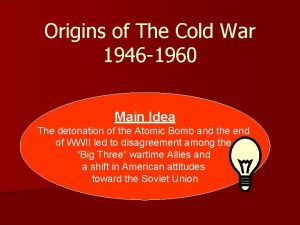The Cold War Era 1946 1960 USII 15














- Slides: 14

The Cold War Era (1946 – 1960) USII. 15, USII. 18, USII. 19

Yalta and Potsdam Conferences Lesson #1 USII. 15 American Vision Ch. 26, Sect. 1

Class Objectives Students will be able to: Summarize the outcomes of the Yalta and Potsdam Conferences Explain how the Yalta and Potsdam Conferences contributed to the start of the Cold War

Cold War Era After WW 2, the United States and the Soviet Union became more hostile towards each other This time period (1946 – 1990) is known as the __________ We will focus on the years 1946 – 1960 for this unit

Yalta Conference Feb. 1945: FDR, Churchill, and Stalin met in Yalta to plan the postwar world Poland would have a _____________ government set up by the Soviet Union but include non. Communists and have free elections All liberated people of Europe ______________________ (Declaration of Liberated Europe) Germany would be divided into ________ zones U. S. , France, Britain, and the Soviet Union would each control one zone Germany would pay reparations to the Soviet Union in the form of trade goods and products __________________ would be divided into zones as well even though it was in the Soviet zone



Potsdam Conference July 1945: Truman, Clement Attlee (new Prime Minister of Great Britain), and Stalin met in Potsdam to discuss ____________________ Truman felt Germany’s economy should be allowed to recover, therefore did not want them to have to pay heavy reparations He wanted to avoid Germans turning to ________ Stalin wanted more reparations and industrial equipment (as their zone was mostly agricultural/farming) Truman allowed the Soviets to take more industrial


Yalta & Potsdam Increase Tensions Between the US & the Soviet Union Yalta Soviet Union forced the King of Romania to appoint a Communist government Violated Soviets refused to allow more than 3 non. Communists in the Polish government Arguments over reparations from Germany Potsdam Stalin did not like Truman’s proposal Truman mentioned the successful atomic bomb test Stalin felt Truman was trying to bully him into accepting the deal

The Iron Curtain The presence of the Soviet army in Eastern Europe forced Poland, Romania, Hungary, and Czechoslovakia to form Communist and Sovietfriendly governments These were called _______________________because they were not under direct Soviet control March 5, 1946: Winston Churchill stated that “an _____________________ __ has descended across the continent, ” separating _____________________ from the West



Class/Homework Assignment Complete the “Causes of the Cold War” summarizer
 The cold war lesson 1 the cold war begins
The cold war lesson 1 the cold war begins Political cartoon of the iron curtain
Political cartoon of the iron curtain The cold war begins 1945-1960
The cold war begins 1945-1960 America confronts the post-cold war era
America confronts the post-cold war era Proxy wars in cold war
Proxy wars in cold war Vietnam war 1960
Vietnam war 1960 Maksud berkerajaan sendiri
Maksud berkerajaan sendiri 1946 born
1946 born Iron curtain caricature
Iron curtain caricature Gpogo
Gpogo Fati timp
Fati timp Kurikulum 1946, kurikulum 1957, dan kurikulum 1961
Kurikulum 1946, kurikulum 1957, dan kurikulum 1961 Lbb 1946/00
Lbb 1946/00 Apakah tujuan ordinan pelajaran 1952 diwujudkan
Apakah tujuan ordinan pelajaran 1952 diwujudkan Dator 1946
Dator 1946

